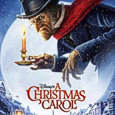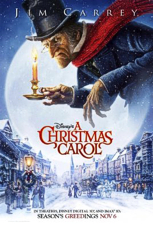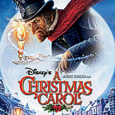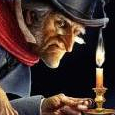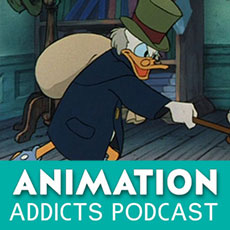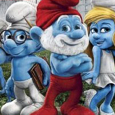Long time readers of several past reviews and, especially, regular readers of the Tooning In column on this site, will have picked up on the fact that Robert Zemeckis used to be my favorite director, but that his recent attempts to squeeze anything near resembling a human performance from his computer generated puppets in such films as The Polar Express and Beowulf have left me stone cold and lamenting this once great filmmaker’s descent into the Dark Side. Where was the innovative and visually ingenious director of the Back To The Future trilogy, the man that forced animation to find its perspective for Who Framed Roger Rabbit, or who pioneered computer-assisted effects in such varied fare as Death Becomes Her, Forrest Gump, Contact, Cast Away and What Lies Beneath?
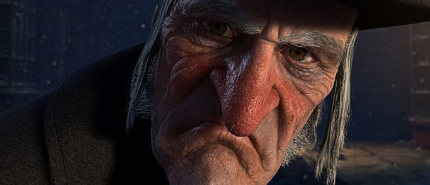 In recent years he has thrown away the rough shot conditions of live-action and confined himself to The Volume, a hideously conceited term for a motion-capture stage, where Zemeckis has now spent almost a decade trying to convince us that a mo-capped Tom Hanks or Angelina Jolie are better than the real thing.
In recent years he has thrown away the rough shot conditions of live-action and confined himself to The Volume, a hideously conceited term for a motion-capture stage, where Zemeckis has now spent almost a decade trying to convince us that a mo-capped Tom Hanks or Angelina Jolie are better than the real thing.
Well, they aren’t, and the films have failed creatively as a result. But still Zemeckis tries and it has to be said that when I heard he had secured the services of a certain Jim Carrey for his latest attempt, I did wonder if the actor might have what it took to break through falsities of the mo-cap method and finally bring life to the dead-eyed “uncanny valley” characters that populate these films. Well, Carrey does and, prepare to be shocked, Zemeckis is back. Kind of.
Apart from an early November release date simple being too early to go and see a Christmas movie, my underlying disappointment with the motion-capture process (and let’s stop calling it performance capture – certainly the end credits of this very film do away with that overcomplicated term and settle for plain old mo-cap) was the reason I, frankly, wasn’t jumping at the bit to catch Carrey and Zemeckis’ collaboration. When dealing with an actor of, say, Andy Serkis’ ability to render what the animators need in order to then pull out a true performance for characters like Gollum or Kong, the performer understands what he is performing for. With the likes of Anthony Hopkins or Ray Winstone in Beowulf, all they are giving is a pure stage performance, leaving the animators little to play with in terms of being able to broaden the caricature. It was ridiculous that the short and stocky Winstone was cast to play the tall and buff Beowulf, but he was so, just because it could be done.
But Zemeckis seems to have learned a lesson, and in A Christmas Carol he casts people closer to the characters’ natural builds. And this time out he has a performer in Carrey that understands that animation is a broad medium. Just like paper tracing rotoscoping leads to boring and flat human animation, which is why Gulliver was such a black hole of personality in the Fleischers’ Gulliver’s Travels, simply relaying the actions of a motion-captured actor via a million ping-pong balls into computer generated character data produces the same flat result. Carrey, however, is a very visual performer, someone who even if asked to act out a small moment will embellish it with wild subtleties that may mark him out as hammy (or “overactor” as he was hilariously called in one of the Liar, Liar outtakes) but turns out to be perfect for the motion-capture process.
Now, before I start gushing that this is a great step forward for the process, let me just say that I am 100% split right down the middle at the results of A Christmas Carol. It’s without doubt a clever attempt to return to Charles Dickens’ text, originally a serialised short story, and the opening frames set classic Disney style on a copy of the book suggests this should really have been called Charles Dickens’ A Christmas Carol to differentiate it from the multiple other screen versions (including two of Disney’s own). If anything, it’s the immortal power of the plot and Zemeckis’ adaptation that succeeds in pushing A Christmas Carol just past the motion-capture confines that still limits more than several certain aspects of the film.
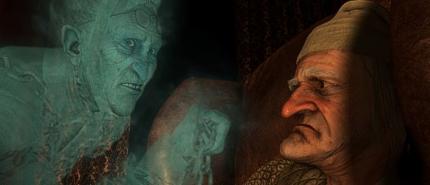 Carrey, who will remind British sitcom fans of Wilfrid Bramble’s turn as the old Steptoe in the legendary comedy Steptoe And Son (remade in the US, without Bramble, as Sanford And Son) actually gives what could quite possibly be his most convincing straight performance ever. His Ebenezer Scrooge is magnificent, old and crotchety but never keeping still and a constant parasitic presence. But as much as I was almost – and found myself wanting to be – drawn in, frustrating details kept appearing to me, even though I wasn’t looking for them and didn’t want to be distracted.
Carrey, who will remind British sitcom fans of Wilfrid Bramble’s turn as the old Steptoe in the legendary comedy Steptoe And Son (remade in the US, without Bramble, as Sanford And Son) actually gives what could quite possibly be his most convincing straight performance ever. His Ebenezer Scrooge is magnificent, old and crotchety but never keeping still and a constant parasitic presence. But as much as I was almost – and found myself wanting to be – drawn in, frustrating details kept appearing to me, even though I wasn’t looking for them and didn’t want to be distracted.
Clothes, for instance, should not stretch on a human if they bend their arm as if they have been painted on them, which led to my constant and annoying picking up of every forearm on every character being too long, especially when they bent their arms. This is a basic, direct-to-video no-no, not something that should have been missed in a much bigger budget production under an undoubtedly much more talented crew.
And, while Carrey is unique, the other actors can’t even begin to match him, the unfortunate aspect of the mo-cap process that mirrors rotoscoping coming to the fore with any kind of rapid movement: there are lots of times when characters slip, fall or move actively and it is as if there is an invisible force working against them (even a wood fire seems overly fashioned to perfection as to be bland). This slo-mo look only goes to work against the performances more, Colin Firth’s Nephew Fred, who looks like his face has been overly made up in latex, the worst of the bunch with, I’m sorry to point out again, the dreaded blank eyes, a trait also shared by Gary Oldman’s Bob Cratchit. There’s just no movement around the eyes, which are crying out for a few more muscle details, and even when Scrooge has a glint in his eye, like Marley’s door knob reflection or the flames of a fire, the eyes look plastic. All they need to do is make the eyeballs themselves more moist looking, and they might be on to something!
But there is good and, like Monster House, this time Zemeckis is serviced by a strong story, lean and mean so that the film gets right to the point without any artificial padding. A theme in the film is dual identities, and not only is it an interesting concept to suggest the three Ghosts, which come to visit penny pinching meany Scrooge and suggest he change his ways, are subconscious facets of Scrooge himself, but equally fascinating is Oldman as both Scrooge’s previous partner Jacob Marley and his current employee Cratchit. Marley himself does look as badly rendered in the final as the stills and trailers suggest, his eyes looking bitmapped on without any depth. The character, also, is quite dreary; Zemeckis has an actor of Oldman’s ability at his disposal but wastes him without tapping into any underlying layers and missing an opportunity to let him burst out of his ghostly confines, the result bringing nothing new to the character, or his on screen appearance, to beat the haunting memory of Alastair Sim’s 1951 feature film.
It’s almost as if Zemeckis seems to be so in awe of his own technology and so interested in wowing us with the “big” details that he forgets the small ones, like using the tools at hand to create something we have never seen before, instead of a CG edition of many things we have. An example is that the director quite often likes to spin us around London via swirling aerial camera swoops, but there’s nothing particularly out of ordinary in Doug Chaing’s perfunctory production design so it just looks like Victorian London has looked in many films we’ve seen before, however impressively rendered it is. Another example is a terrific chase sequence towards the end, ruined by some bits of business for Scrooge that feels tacked on and drops some hideous video game extras into his way. And then Zemeckis doesn’t know when to cut, the chase turning into an overproduced cartoon with plenty of perspective background animation that was amazing back when Aladdin flew through the Cave of Wonders but just feels old had now the same trick turns up in every CG animation movie these days.
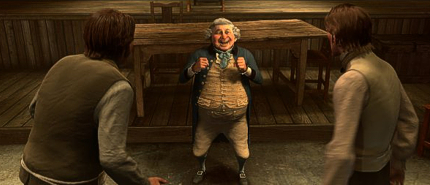 Much of the text is taken from Dickens’ original, which sometimes works and sometimes doesn’t. There’s an emotionally pivotal scene, where young Scrooge is dumped by his finance, played by Robin Wright Penn, but the sudden lapse into aged prose means that the language won’t register to everyone. Of course, actions speak louder than words, but since she is unable to make authentic eye contact because of the feeble mo-cap work, there’s a lack of true emotion, and one or two “did she leave him?” questions from younger audiences.
Much of the text is taken from Dickens’ original, which sometimes works and sometimes doesn’t. There’s an emotionally pivotal scene, where young Scrooge is dumped by his finance, played by Robin Wright Penn, but the sudden lapse into aged prose means that the language won’t register to everyone. Of course, actions speak louder than words, but since she is unable to make authentic eye contact because of the feeble mo-cap work, there’s a lack of true emotion, and one or two “did she leave him?” questions from younger audiences.
The scene with Scrooge’s sister Fanny is even more cringe-worthy, and I can’t say much better for Bob Hoskins as Fezziwig and, repeating the dual identities notion, Old Joe. You’d think that Hoskins would be the perfect Fezziwig but, begging the question of why these films are not just shot with live actors who are matted into backgrounds afterwards, is the sight of Fezziwig dancing – Hoskins’ mo-capped head bobbing about statically on top of an obviously key framed body is just strange.
As the three Spirits arrive, one might hope for some visual invention, but with all the tricks at his disposal, Zemeckis can’t seem to find the imagination to utilize them to best advantage. One of the reasons given as to why he wanted to make the film was to realise the Ghost Of Christmas Past as the candle flame character he is described as by Dickens, but the reality is that it looks like what it is: a mo-capped head covered in flames rather than a face made of flame. Carrey brings an otherworldly Irish lilt to the voice, and for a moment you might believe something special has come along, until you notice the Spirit has stupid little cartoon hands. Why aren’t the Ghost Of Christmas Past’s hands more flames? It seems a laziness on the part of the filmmakers that then had me questioning other design choices: there is basically no need for a flame to have a chin. Or a nose.
Much, much, much better is the entire middle act, where the Ghost Of Christmas Present dominates the film. This is Carrey again, naturally, but my word! Though again not terribly original in design, Christmas Present is easily the most successful result of the mo-cap process in A Christmas Carol, and is a real achievement and resounding surprise. By this point, I had resigned myself to simply enjoying the story rather than try and engage with the characters, but Carrey’s sheer exuberance, dialled up even more than usual, shines through, with real acting in his eyes! Perhaps it’s the joviality of the character, but Christmas Present storms into the movie and lifts it to another level and, if anything, it’s worth seeing A Christmas Carol for these scenes alone. The constant whirls around London between ghostly visits can be tiring, but this one, seen through the floorboards of Scrooge’s house, is uniquely conceived and brilliantly executed; a 3D sequence that works just as well and has the same dizzying impact in 2D.
The Ghost Of Christmas Present is really good, and it’s another frustrating aspect of the movie that begs, why can’t the other characters be given the same amount of detail and all be this great? If it’s time and money that need to be spent on achieving the remarkable results Carrey and the animators accomplish with the Christmas Present character, then this is precisely where Zemeckis’ future motion-captured endeavors need to be focused. My fear is that his next such film, a pointless remake of Yellow Submarine, would try and ostensibly resurrect the band circa 1968, but if Image Movers Digital (apparently now a company free from its Sony Imageworks association, going by their Hewlett-Packard endorsement and IMD retaining the copyright on this film) can get close again to what they’ve captured with Christmas Present, it could offer some hope.
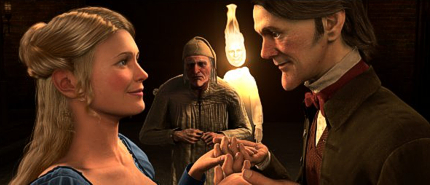 A great deal of the genuine Christmas spirit throughout the film comes from long-time Zemeckis composer Alan Silvestri, who fills his score with traditional Christmas carols but never over emphasizes them, choosing instead to pick a phrase or two only and weave them into his original music.
A great deal of the genuine Christmas spirit throughout the film comes from long-time Zemeckis composer Alan Silvestri, who fills his score with traditional Christmas carols but never over emphasizes them, choosing instead to pick a phrase or two only and weave them into his original music.
It has a wonderful effect of serving the film with much more magic than it might have, the mixture of deep orchestral arrangements and choirs bringing a real joy to Scrooge’s world and carrying him and the characters through their journey. A particular moment where all the elements come together grippingly is a nightmarish scene towards the end of the Christmas Present sequence, where the score and excellent lighting both go some way to really making the moment something you can’t peel your eyes away from, even if the video game camera moves and the two child sprites are to over the top.
A Christmas Carol is certainly the best of Zemeckis’ three (and a half, if you count the executive produced Monster House) mo-capped tryouts so far, despite the many shortcomings still inherent in the method. They say “the eyes have it”, but that unfortunately that’s where mo-cap still falters and is the biggest hurdle for the process to jump. Every so often the older Scrooge looks too young, especially around the eyes, though I’ll be charitable and suggest this could be an intentional effort to express the good that remains inside him. But the Ghost Of Christmas Present somehow manages to fully overcome this difficulty – whatever it is they were doing differently I don’t know, but he just works, and they need to pursue this angle further if mo-cap is to remain a viable animation medium.
All of which leads to my being 50/50 split over A Christmas Carol. Because, Ghost Of Christmas Present and Scrooge at certain times apart, the motion-capture on show here is just still too clunky to be taken as an authentic alternative (though I await with great interest the WETA result of Spielberg and Jackson’s mo-capped but stylised Tintin movies). Even the person I was viewing the film with, who hadn’t been aware it was a mo-cap film, asked why the characters looked “funny and plasticky” and thought it was down to bad make-up. However, on the flip side, we both did still enjoy the various elements, namely Carrey’s performance, Silvestri’s score and the good old, basic story; the film certainly has an entertainment value. But, then again, did we really need another version of Dickens’ tale?
Cinematic interpretations of A Christmas Carol are almost as old as cinema itself, and particularly notable are Seymour Hicks’ first talkie version in 1935, Sim’s 1951 edition, Mr Magoo’s 1962 special, Albert Finney’s 1970 musical, Richard Williams’ 1971 animation (again with Sim), Mickey Mouse’s take in 1983 and, of course, The Muppets’ on fine form in 1992. That’s not to mention the huge number of television productions over the years, and it was only in 2001 that we had the last animated (but very dire) feature, with the voices of Kate Winslet and Nicholas Cage. What does Zemeckis’ bring new to the table? The answer is, inevitably, very little, and while the film is highly engaging at times, one can’t help but feel an opportunity for some more originality has been squandered in the attempt to pair “Zemeckis” and “Christmas” together again after The Polar Express.
For all the new technology on show, it ultimately doesn’t help this Carol be anything the others were not, and although there is periodically much to enjoy, it’s essentially very traditional, with a visually obvious, and thus visually boring, approach. So while Carrey and Zemeckis’ A Christmas Carol doesn’t quite raise a cheer of “ho-ho-ho”, it’s a case of not being so much of an “oh-no-no” either. But The Muppets did it better.
Walt Disney Pictures/Image Movers Digital
November 6 2009
96 minutes
Rated PG
directed by Robert Zemeckis


